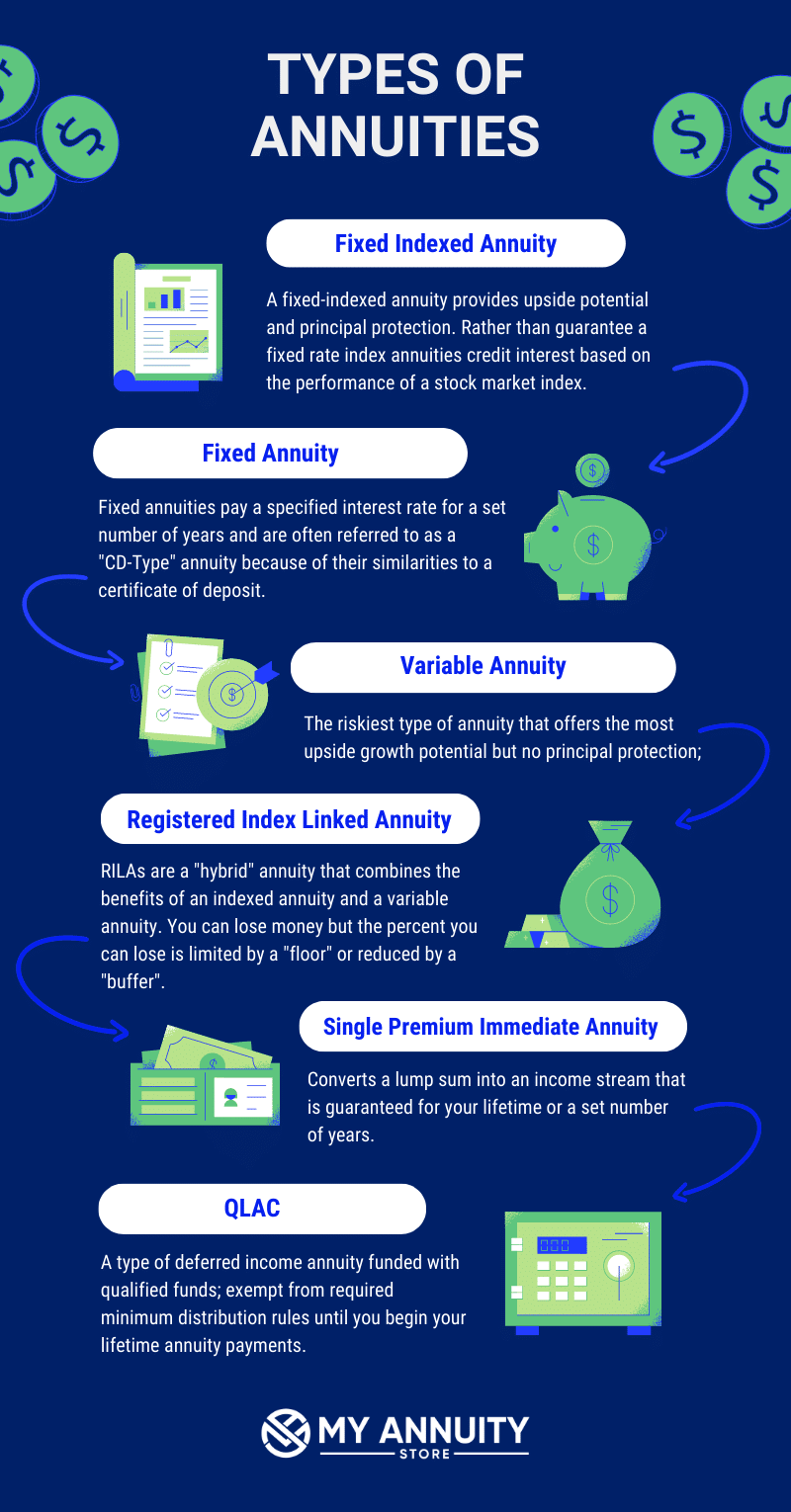All Categories
Featured
Table of Contents
Equally as with a taken care of annuity, the owner of a variable annuity pays an insurance company a lump amount or collection of repayments in exchange for the promise of a collection of future repayments in return. But as stated over, while a taken care of annuity expands at an ensured, consistent price, a variable annuity expands at a variable price that depends upon the efficiency of the underlying financial investments, called sub-accounts.

During the buildup phase, assets bought variable annuity sub-accounts expand on a tax-deferred basis and are strained only when the agreement proprietor takes out those profits from the account. After the buildup stage comes the earnings stage. Gradually, variable annuity properties should theoretically increase in worth up until the contract owner determines she or he wish to begin taking out cash from the account.
The most considerable concern that variable annuities commonly present is high cost. Variable annuities have several layers of charges and expenditures that can, in accumulation, create a drag of up to 3-4% of the contract's value each year.
Understanding Fixed Interest Annuity Vs Variable Investment Annuity A Comprehensive Guide to Investment Choices Defining the Right Financial Strategy Pros and Cons of Various Financial Options Why Fixed Annuity Vs Equity-linked Variable Annuity Is Worth Considering How to Compare Different Investment Plans: A Complete Overview Key Differences Between Different Financial Strategies Understanding the Key Features of Long-Term Investments Who Should Consider Variable Vs Fixed Annuity? Tips for Choosing the Best Investment Strategy FAQs About Planning Your Financial Future Common Mistakes to Avoid When Choosing What Is Variable Annuity Vs Fixed Annuity Financial Planning Simplified: Understanding Your Options A Beginner’s Guide to Variable Annuity Vs Fixed Annuity A Closer Look at How to Build a Retirement Plan
M&E expense costs are determined as a percent of the contract value Annuity issuers hand down recordkeeping and various other administrative expenses to the agreement owner. This can be in the type of a flat yearly cost or a percentage of the agreement value. Administrative costs might be consisted of as part of the M&E risk cost or may be examined separately.
These costs can vary from 0.1% for easy funds to 1.5% or even more for actively handled funds. Annuity contracts can be customized in a number of means to offer the details needs of the agreement owner. Some usual variable annuity cyclists consist of assured minimum buildup advantage (GMAB), assured minimum withdrawal advantage (GMWB), and ensured minimum income benefit (GMIB).

Variable annuity contributions provide no such tax reduction. Variable annuities have a tendency to be very inefficient vehicles for passing riches to the future generation since they do not take pleasure in a cost-basis adjustment when the original contract proprietor passes away. When the proprietor of a taxed investment account dies, the expense bases of the investments held in the account are adjusted to mirror the marketplace rates of those financial investments at the time of the owner's fatality.
Exploring Variable Vs Fixed Annuities A Closer Look at Pros And Cons Of Fixed Annuity And Variable Annuity Breaking Down the Basics of Investment Plans Advantages and Disadvantages of Annuities Fixed Vs Variable Why Fixed Annuity Or Variable Annuity Is Worth Considering How to Compare Different Investment Plans: How It Works Key Differences Between Variable Annuity Vs Fixed Annuity Understanding the Key Features of Fixed Vs Variable Annuity Who Should Consider Strategic Financial Planning? Tips for Choosing Fixed Vs Variable Annuity FAQs About Deferred Annuity Vs Variable Annuity Common Mistakes to Avoid When Choosing a Financial Strategy Financial Planning Simplified: Understanding Your Options A Beginner’s Guide to Smart Investment Decisions A Closer Look at How to Build a Retirement Plan
Such is not the instance with variable annuities. Investments held within a variable annuity do not receive a cost-basis adjustment when the initial owner of the annuity dies.
One substantial concern connected to variable annuities is the possibility for problems of passion that might feed on the part of annuity salesmen. Unlike a monetary advisor, that has a fiduciary responsibility to make investment decisions that benefit the customer, an insurance broker has no such fiduciary responsibility. Annuity sales are highly lucrative for the insurance policy professionals that offer them since of high ahead of time sales compensations.

Numerous variable annuity agreements have language which places a cap on the percentage of gain that can be experienced by particular sub-accounts. These caps protect against the annuity owner from completely taking part in a part of gains that might otherwise be appreciated in years in which markets generate considerable returns. From an outsider's point of view, it would certainly seem that investors are trading a cap on investment returns for the aforementioned guaranteed flooring on financial investment returns.
As kept in mind over, give up costs can seriously restrict an annuity proprietor's capability to move properties out of an annuity in the very early years of the contract. Further, while many variable annuities permit contract owners to withdraw a specified amount throughout the accumulation phase, withdrawals past this amount generally result in a company-imposed cost.
Withdrawals made from a fixed rates of interest financial investment alternative could additionally experience a "market price adjustment" or MVA. An MVA changes the value of the withdrawal to mirror any kind of modifications in passion prices from the time that the cash was purchased the fixed-rate choice to the time that it was withdrawn.

Rather commonly, also the salespeople that market them do not fully comprehend how they work, and so salesmen sometimes victimize a purchaser's emotions to sell variable annuities as opposed to the advantages and suitability of the items themselves. Our company believe that capitalists should completely recognize what they own and how much they are paying to own it.
Analyzing Strategic Retirement Planning Key Insights on Fixed Income Annuity Vs Variable Growth Annuity What Is Fixed Vs Variable Annuity? Advantages and Disadvantages of Fixed Index Annuity Vs Variable Annuities Why Choosing the Right Financial Strategy Is a Smart Choice Fixed Annuity Vs Variable Annuity: Simplified Key Differences Between Different Financial Strategies Understanding the Risks of Long-Term Investments Who Should Consider Choosing Between Fixed Annuity And Variable Annuity? Tips for Choosing the Best Investment Strategy FAQs About Planning Your Financial Future Common Mistakes to Avoid When Planning Your Retirement Financial Planning Simplified: Understanding Annuities Variable Vs Fixed A Beginner’s Guide to Variable Annuity Vs Fixed Annuity A Closer Look at How to Build a Retirement Plan
However, the exact same can not be said for variable annuity properties held in fixed-rate financial investments. These assets lawfully come from the insurance provider and would certainly therefore be at risk if the business were to stop working. Any type of assurances that the insurance policy business has concurred to offer, such as an assured minimum income benefit, would be in concern in the occasion of a service failure.
Prospective buyers of variable annuities must recognize and think about the financial condition of the issuing insurance policy firm before getting in right into an annuity agreement. While the benefits and downsides of different types of annuities can be debated, the genuine issue bordering annuities is that of viability. In other words, the inquiry is: who should possess a variable annuity? This question can be difficult to answer, provided the myriad variants readily available in the variable annuity world, however there are some basic standards that can aid capitalists decide whether annuities need to contribute in their monetary strategies.
After all, as the stating goes: "Caveat emptor!" This post is prepared by Pekin Hardy Strauss, Inc. Fixed annuities vs market risk. ("Pekin Hardy," dba Pekin Hardy Strauss Wealth Monitoring) for informational objectives only and is not planned as an offer or solicitation for company. The info and information in this article does not constitute legal, tax obligation, audit, investment, or various other professional guidance
Table of Contents
Latest Posts
Analyzing Annuity Fixed Vs Variable Everything You Need to Know About Financial Strategies Defining Variable Annuity Vs Fixed Annuity Advantages and Disadvantages of Fixed Indexed Annuity Vs Market-va
Decoding Tax Benefits Of Fixed Vs Variable Annuities A Comprehensive Guide to Investment Choices What Is Fixed Vs Variable Annuity? Features of Smart Investment Choices Why Fixed Annuity Vs Equity-lin
Highlighting the Key Features of Long-Term Investments Key Insights on Variable Vs Fixed Annuity What Is the Best Retirement Option? Benefits of Fixed Income Annuity Vs Variable Growth Annuity Why Cho
More
Latest Posts